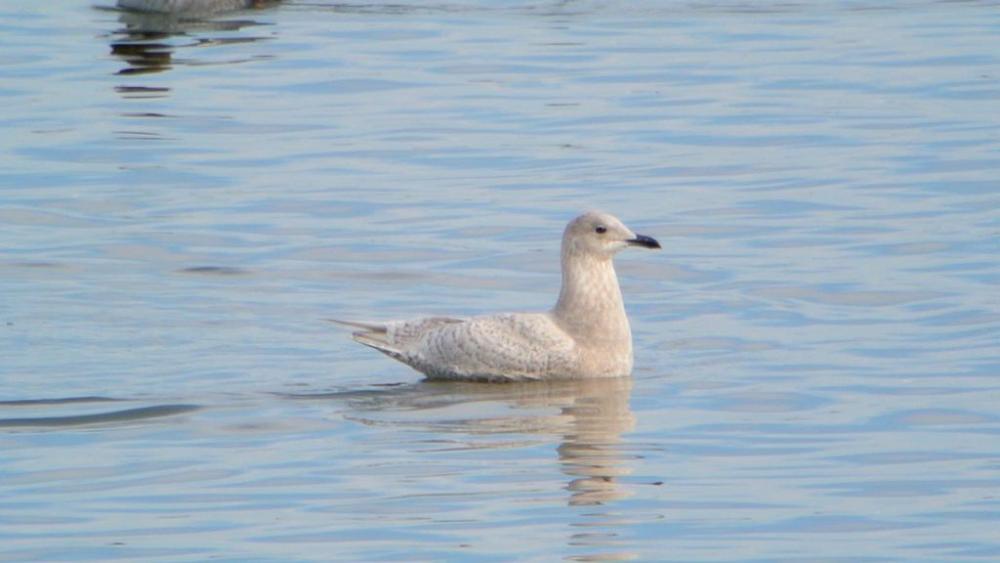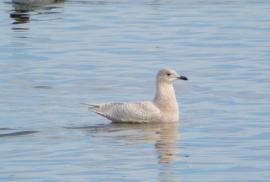Guide to Boreal Birds
Overview
The habits of the two "white-winged" gulls that occur regularly in the East are similar, but the smaller Iceland Gull is more buoyant and graceful on the wing. It is also more of a scavenger and much less predatory. In addition to garbage dumps and sewage outlets, this species frequents places where fish are being cleaned. Both this species and the Glaucous Gull, being relatively scarce, are eagerly sought by birders.
Description
23" (58 cm). A smaller version of the Glaucous Gull, with relatively smaller bill and rounded head. Adults are pearl-gray above, white on head and below, Canadian breeders usually with darker gray markings at wing tips; feet are pinkish. Immatures are creamy buff; bill dark in first winter.
Voice
Like Herring Gull, a variety of croaks, squeaks, and screams.
Nesting
2 or 3 light brown eggs, with darker blotches, in a nest lined with grass, moss, and seaweed placed either on a cliff or a sandy shore.
Habitat
Lake and river shores, ocean beaches, sewer outlets, and refuse dumps.
Range/Migration
Breeds on eastern Baffin Island and coastal Greenland. Winters in eastern North America south to New Jersey and Great Lakes. Also in Eurasia.



